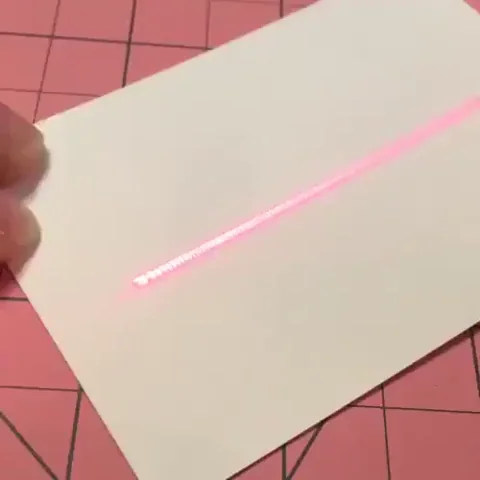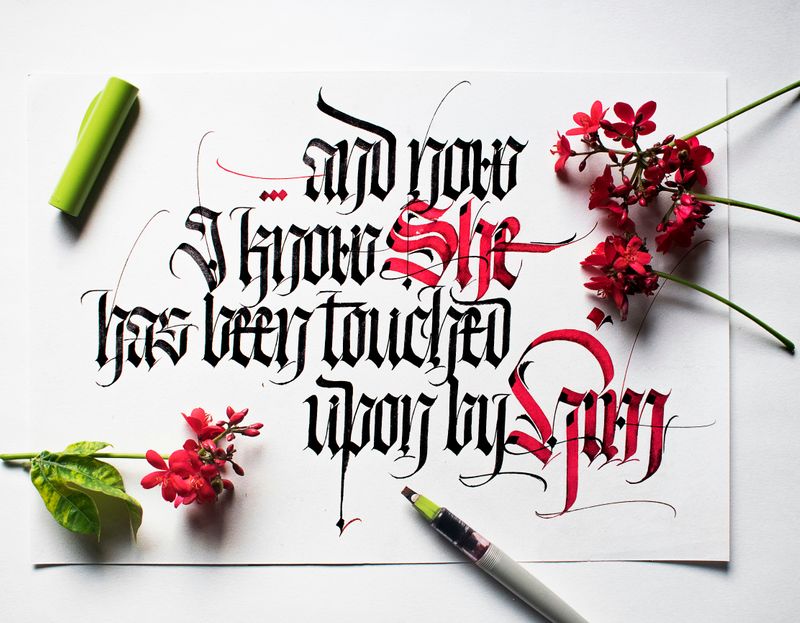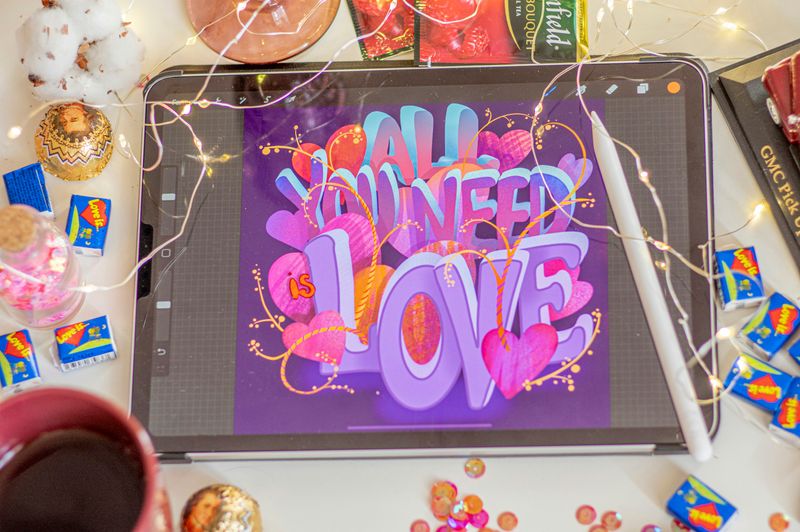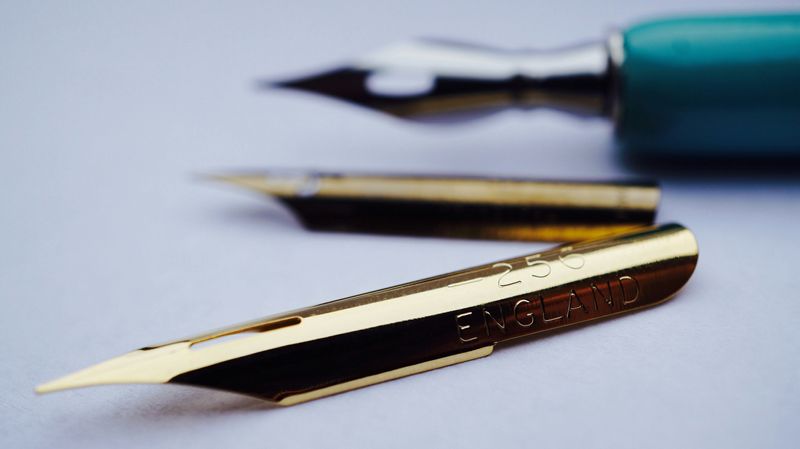Have you ever looked at your writing and thought about adding a few fancy strokes to take those letters to the next level?

Or maybe you're just looking to try out a new creative hobby and asking yourself "How can I learn calligraphy?" It's a fun craft to learn. You can start practicing with just a regular pen and piece of paper.
Follow these 5 tips to start learning calligraphy and bring your creative ideas to life.
#1: Choose your calligraphy style
Calligraphy is the art of aesthetic writing with balanced and harmonious symbols.

The history of writing art is rich and there are plenty of styles and systems that developed over the years. One way to classify calligraphy styles is by geography and culture:
Western calligraphy
Eastern calligraphy
Arabic calligraphy
Another way to categorize these styles is by the tools used:
Pointed pen
Broad edge pen
Brush
Digital tools
Beginner-friendly calligraphy styles
 Photo by Mayank Baranwal on Unsplash
Photo by Mayank Baranwal on UnsplashCopperplate
This calligraphy style gets its name from the engraved copper plates used in printing during the 18th century. The symbols have an elegant and classic look. The pointed pen is the main tool used in Copperplate writing.
 Image courtesy of veraholera via Freepik
Image courtesy of veraholera via Freepik
Italic
Italic calligraphy style, born in Italy, is a great traditional script for beginners. The letters are clean and easy to write with some practice. Make sure to use a broad edge pen to get an authentic italic script experience.
 Photo by Mayank Baranwal on Unsplash
Photo by Mayank Baranwal on UnsplashBlackletter
Blackletter is a general name for several Gothic scripts that started to appear in the 11th century. If you like the look of thick, straightforward strokes, grab a broad edge pen or marker and start practicing!
 Photo by Elena Mozhvilo on Unsplash
Photo by Elena Mozhvilo on UnsplashModern and digital calligraphy
Modern calligraphy is inspired by traditional scripts, but comes without strict rules, so feel free to be creative with forms and materials. Experiment with traditional tools like pens and brushes or try digital tools like stylus to paint on your tablet.

If you're still unsure about which style to choose, take this calligraphy quiz to help you make a decision!
#2: Shop for supplies
The market for calligraphy stationery is very diverse. Here are some essential tools that calligraphers use:
Pens and brushes
Pen holders and nibs
Ink
Paper
Different styles of calligraphy require different tools.
As a beginner, it’s easy to feel overwhelmed by all the options. Before you go shopping for calligraphy supplies, make a list of what you need based on the specific type of calligraphy you want to learn.
For example, you would use metallic nibs for Western calligraphy but not for Eastern styles, where brushes are more common.
 Photo by mik izi on Unsplash
Photo by mik izi on UnsplashEach tool comes in different varieties, so it’s important to do some research beforehand. The thickness of the paper and the size of the brush or nib will affect how the ink behaves on the sheet.
Quiz
What supplies do you need to buy to start calligraphy? Select all that apply:
#3: Use learning materials for beginners
As a beginner in calligraphy, you shouldn’t worry about the lack of learning materials. You'll have plenty out there! The key is to practice as much as possible.

Instructional books are great for studying calligraphy at your own pace.
They often include worksheets with drills for basic strokes, words, and sentences.

Many calligraphers also create their own websites and offer online courses. This is a guided and structured way to learn without the stress of gathering all the information yourself.

If you prefer something more interactive, check out video tutorials on social networks. Whether you choose short or long formats, you'll always have a dynamic visual reference to guide you through every stroke.
#4: Attend local workshops
Online calligraphy courses are great, but what about booking an offline calligraphy session? Look for local workshops where you can meet new people and practice your skills in person with an experienced calligrapher.
A professional can give you personalized feedback on your movements. You can also bring your friends along to share the experience and create fun memories together.
 Photo by Brooke Cagle on Unsplash
Photo by Brooke Cagle on Unsplash#5: Keep your passion alive
People often give up on new hobbies before they’ve even really started. Calligraphy is a long-term investment, so your interest in calligraphy might fade if you don't see any quick progress. To keep your motivation alive, it's important to track your achievements and stay inspired. Here are a couple of ideas on how to do that.
You can create a social media profile, where you regularly post photos and videos of your progress. Looking back at how far you've come could be a great motivator to keep going.

The more you learn about calligraphy, the more your creative taste will develop. Follow famous calligraphers and artists who work in your favorite style to find inspiration.
Personal Insight
When I first started my calligraphy hobby, I didn't know much about different styles, so I chose Copperplate because of its popularity. I wasn't disappointed! It was really easy to find learning materials, and there was a wide selection of tools available both online and in local shops.
I made quick progress. After just a month of on-and-off practice, I was already writing postcards for my friends and family.
Check out my attempt to write my favorite quote from the movie "The Shawshank Redemption" in Copperplate!
 Photo by the author
Photo by the author
Take Action
The best in your calligraphy journey is yet to come. Time to act!
Your feedback matters to us.
This Byte helped me better understand the topic.

